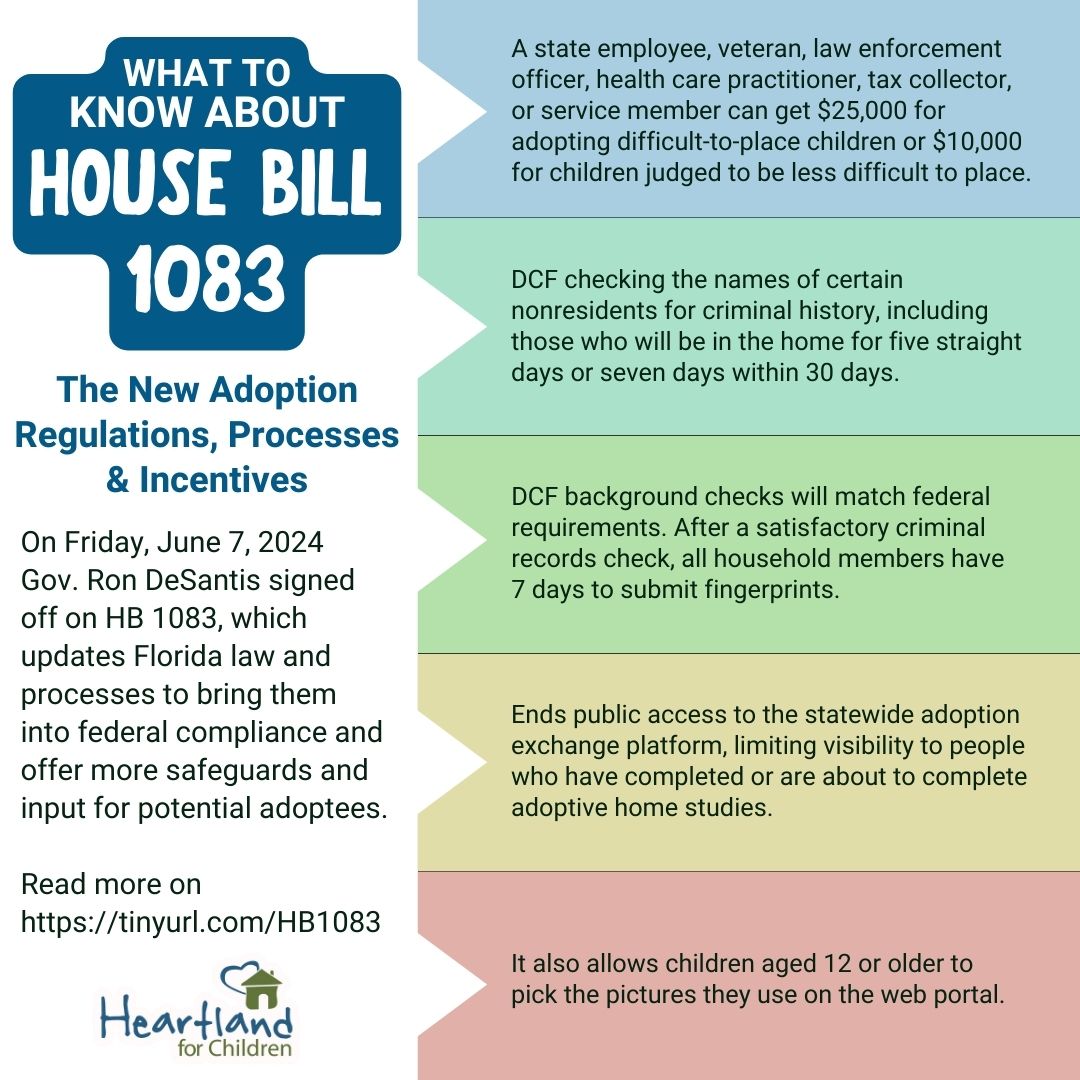Posted: 6/12/2024
HB1083: New Adoption Regulations & Incentives
Gov. Desantis signs HB1083 to update Florida Adoption processes and offer more safeguards and incentives.

Visitors, background checks, and more will see big changes.
Florida’s Governor has approved a package of reforms to the state’s adoption process.
On Friday, June 7th, 2024, Gov. Ron DeSantis signed off on HB 1083, which updates Florida law and processes to bring them into federal compliance and offer more safeguards and input for potential adoptees.
One significant change is that the legislation will align the Department of Children and Families’ background checks with federal requirements. After a satisfactory criminal records check, all household members have seven days to submit fingerprints to the Florida Department of Law Enforcement.
Visitors to homes are under scrutiny as well, with DCF checking the names of certain nonresidents for criminal history, including those who will be in the home for five straight days or seven days within 30 days.
The bill also establishes a process for dealing with orphans, allowing an “interested party” to “file a petition for permanent commitment.”
Additionally, the legislation creates a mechanism for emergency removals of children from permanent placement if there is probable cause to believe the child has been abused, neglected, or abandoned by the person who adopted them.
The legislation cuts in half the time needed for interim placements, down from six months to three months if the so-called “successor guardian” knows the child.
The bill also provides more financial incentives to adopt for certain people. A state employee, veteran, law enforcement officer, health care practitioner, tax collector, or service member can get $25,000 for adopting difficult-to-place children or $10,000 for children judged to be less difficult to place.
The legislation also ends public access to the statewide adoption exchange platform, limiting visibility to people who have completed or are about to complete adoptive home studies. It also allows children aged 12 or older to pick the pictures they use on the web portal.
Read Full Article written by: A.G. Gancarski